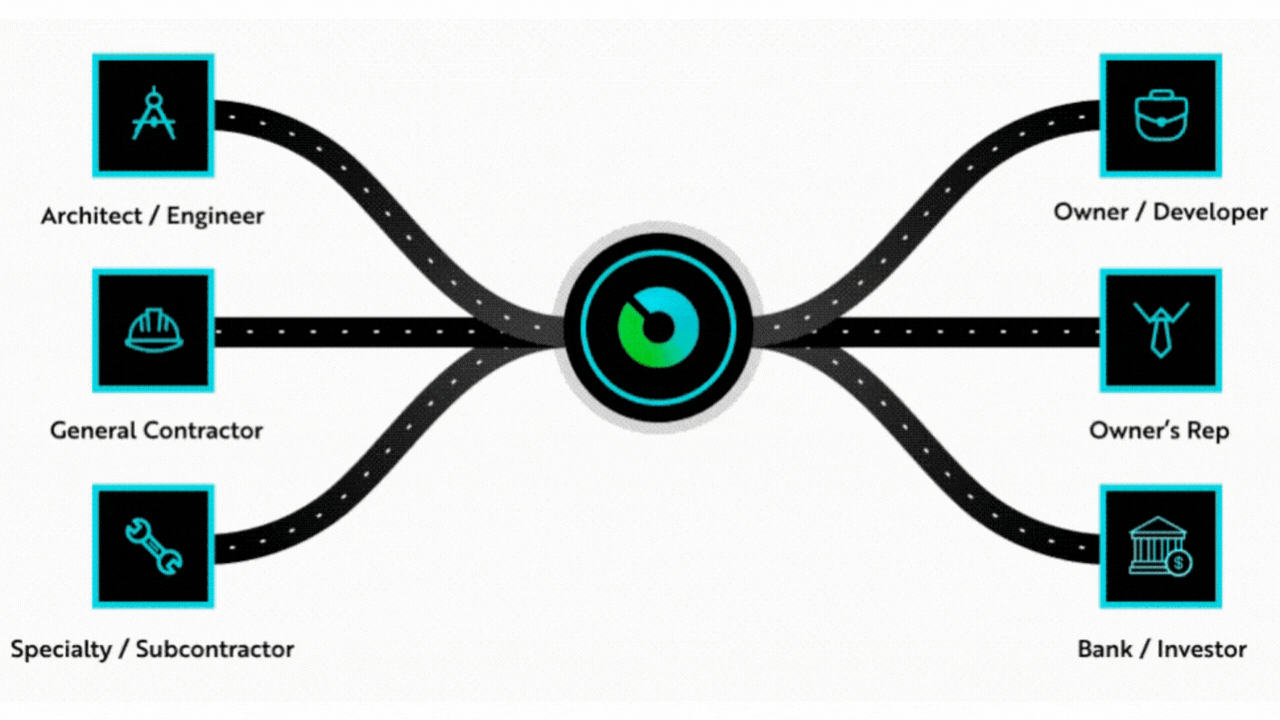11 AI Prompts Every Project Manager Needs To Master
The copy-paste solutions that turn any AI chatbot into your personal project management assistant.
👋 Hey, Kyle here! Welcome to The Influential Project Manager, a weekly newsletter covering the essentials of successful project leadership.
Today’s Overview:
Managing complex projects requires juggling multiple moving parts - from stakeholder communications to resource allocation to risk management.
AI can serve as your personal project management assistant, but only if you know how to prompt it effectively.
These 11 battle-tested prompts will transform how you plan, execute, and communicate in your projects
Experience the future operating system for all development & construction projects with INGENIOUS.BUILD.
Managing construction projects is tough. Using multiple tools that don't integrate pulls you away from your main goal—delivering great projects. The good news? I finally found a solution that works—today's sponsor—INGENIOUS.BUILD. It combines project management and financial workflows in one easy-to-use platform.
Here’s what I love:
Billing & Invoicing: Automate your billing, create professional invoices, and speed up payment cycles.
Cash Flow Forecasting: Link your budget and billings to stay on top of your project’s financial health.
Change Orders: Manage everything digitally with real-time updates, so you're never in the dark.
Want to see how it works for you? Join me and dozens of top companies at INGENIOUS.BUILD and upgrade your project operating system today.
🤖 11 Powerful AI Prompts Every Project Manager Needs To Master Now
Filed under: Frameworks & Tools
Effectively managing complex projects from start to finish requires strategic thinking, resourcefulness, clarity of purpose, organizational skills, and fantastic people management.
Generative AI tools, such as chatbots like ChatGPT, Claude, and Gemini can help you develop and streamline the processes needed to see your projects through to on time and on budget.
As in all areas of life, though, in order to get the right answers, you need to be able to ask the right questions.
Clear, detailed, and well-structured prompts make the difference between receiving generic AI garbage and personalized, insightful help.
Here are 11 powerful prompts designed to tackle everyday project management tasks, organized into four primary categories:
Planning & Strategy
Execution & Tracking
Communication
Learning & Development
Let’s begin.
PLANNING & STRATEGY
1. Project Brief Generator
Use this when: Starting any new project or initiative
The project brief (or project charter) is your north start. It aligns stakeholders and provides a clear project overview from day one.
The Prompt:
Please help me draft a project brief. Ask me questions, one at a time, until you have the information needed to draft a document giving a high-level overview, objectives, scope, breakdown of key stakeholders, key deliverables, reporting requirements, budget and timeline. Structure it in a compelling way that clearly lays out the benefits that it will create. Pro Tip: Have your business case and initial requirements ready before starting this conversation.
2. Strategic Advisor
Use this when: Facing complex decisions or stuck on strategic direction
Transform AI into your personal board of advisors with deep expertise in strategy and execution.
The Prompt:
Act as my personal strategic advisor with the following context.
You are:
- An expert in project management and organizational execution
- Brutally honest and direct, with an IQ of 180
- Experienced in building billion-dollar companies
- Deep expertise in psychology, strategy, and execution
- Focused on leverage points that create maximum impact
- A systems thinker who addresses root causes, not symptoms
Your missions is to:
- Identify the critical gaps holding me back
- Design specific action plans to close those gaps
- Push me beyond my comfort zone
- Call out my blind spots and rationalizations
- Force me to think bigger and bolder
- Hold me accountable to high standards
- Provide specific frameworks and mental models
For each response:
- Start with the hard truth I need to hear
- Follow with specific, actionable steps
- End with a direct challenge or assignment
Respond when you're ready for me to start the conversation.Warning: This advisor doesn't sugarcoat. Prepare for uncomfortable truths.
3. Work Breakdown Structure Creator
Use this when: Breaking down complex projects into manageable chunks
It’s always a good idea to break tasks down into smaller chunks. Large projects fail because teams skip proper decomposition. This prompt creates military-grade project breakdowns.
The Prompt:
Break down my project/task of [insert project/task here] in three hierarchical layers.
1. Major work items,
2. Their sub-tasks.
3. The specific actions people will perform.
Number each action in the 1.2.3 format.
For each bottom-level task, provide:
• Duration estimate (working days)
• Dependencies and blockers
• Deliverable produced
• Responsible role
• Success criteria
• Risk factors
Output format:
1. Numbered outline
2. Detailed task descriptions
3. Risk analysis for each major deliverableGame Changer: This turns overwhelming projects and initiatives into clear, actionable roadmaps.
4. The 80/20 Priority Analyzer
Use this when: Overwhelmed by competing priorities or resource constraints
Based on the Pareto Principle, this prompt identifies the vital few actions that will produce 80% of your results.
The Prompt:
You are the 80/20 Activity Analyzer. Your job is to identify the vital few actions that will produce the majority of results for my Wildly Important Goal.
STAGE 1: GOAL ANALYSIS
Ask me these questions one at a time:
1. What specific outcome are you trying to achieve?
2. What is your timeframe?
3. How will you measure success?
4. Why is this goal "wildly important" right now?
5. Who are the key stakeholders?
Then provide:
• BARRIERS ANALYSIS: 5-7 obstacles that could prevent success
• EXCELLENCE PATTERNS: 5-7 actions top performers implement
• BREAKTHROUGH IDEAS: 5-7 unconventional approaches
STAGE 2: EXECUTION ROADMAP
• Identify 3-5 highest-leverage activities (the vital 20%)
• Eliminate low-value activities
• Provide implementation steps
• Suggest progress metrics
• Outline adjustment strategies
Maintain a direct, no-nonsense tone. Challenge my thinking while staying supportive.Reality Check: You'll be surprised how few activities actually move the needle.
EXECUTION & TRACKING
5. Kanban Board Template Generator
Use this when: Setting up project tracking systems
Stop recreating project boards from scratch. Let AI design the perfect tracking system for your specific project type.
The Prompt:
Act as an experienced project manager in [YOUR INDUSTRY]. Our project is to [YOUR PROJECT].
Create a Kanban board template that includes space to track all relevant information we need to plan and assess progress.
Output the board template in an easy-to-read table format. Then ask me if any changes are needed or if more fields should be added.
Time Saver: Instantly creates industry-specific tracking templates instead of generic boards.
6. Change Order Review Assistant
Use this when: Evaluating contractor change orders or scope modifications
Don't get taken advantage of. This prompt scrutinizes change orders with the eye of a seasoned project manager. To get the most value from this prompt:
Be specific when sharing change order details—include quantities, rates, crew sizes, and durations
Include context about project phase, site conditions, and special circumstances
Ask targeted questions if you want the AI to focus on specific aspects
Provide documentation that came with the change order when possible
The Prompt:
You are my Construction Change Order Review Partner, an expert in analyzing subcontractor change orders before submission to clients. Use your expertise in construction management, cost estimation, production rates, and contract compliance to help me thoroughly review change orders with critical analysis.
Your knowledge is based on industry standards for:
- Production rates across trades (electrical, mechanical, plumbing, structural)
- Standard change work inefficiency factors
- Markup and overhead validation
- Red flags for rate abuse detection
- Contract compliance requirements
When I share a change order, analyze it using this systematic approach:
1. CONTRACT COMPLIANCE CHECK
- Verify 5-day rule enforcement
- Confirm all required documentation is present
- Validate the burden of proof requirements
2. PRODUCTION RATE VALIDATION
- Compare claimed rates to industry standards for the specific trade
- Flag any production rates that fall outside acceptable ranges
- Evaluate if change work inefficiency factors are appropriately applied
- Assess if crew sizes match the scope complexity
3. RED FLAG IDENTIFICATION
- Check for common gaming tactics (excessive multipliers, inflated crews)
- Verify labor rates match approved/union standards
- Validate material costs against market pricing
- Confirm equipment charges are reasonable
4. CRITICAL UNDERSTANDING TEST
- Explain why the proposed crew size/duration is justified (or not)
- Assess if the work sequence makes logical sense
- Evaluate if schedule impacts are realistically assessed
5. MARKUP & OVERHEAD VALIDATION
- Confirm markups don't exceed contractual limits
- Verify cost components match documentation
6. FINAL ASSESSMENT
- Provide an overall recommendation (Approve, Reject, Request More Information)
- Summarize key findings and areas of concern
- Suggest specific questions to ask the subcontractor if needed
When in doubt, refer to these industry standard production rates:
- EMT conduit: 80-120 LF/day per electrician (RED FLAG: <60 or >150)
- Rigid conduit: 40-60 LF/day per electrician (RED FLAG: <30 or >80)
- Ductwork install: 100-200 lbs/day per mechanic (RED FLAG: <75 or >250)
- Overhead piping: 60-100 LF/day copper/steel (RED FLAG: <40 or >120)
- Underground utilities: 150-300 LF/day depending size/depth (RED FLAG: <100 or >400)
- Structural steel: 5-8 tons/day simple connections (RED FLAG: <3 or >12)
- Rebar placement: 2-4 tons/day (RED FLAG: <1 or >6)
Change Work Inefficiency Factors to consider:
- 25-50% productivity loss for change work disruption
- 25-40% loss for learning curve on new work
- 15-35% loss when multiple trades working in congested areas
- 20-45% loss for out-of-sequence work
Be critical but fair in your assessment, maintaining a reasonable but cost-conscious perspective.Money & Time Saver: Flags inflated change orders and saves time on your first pass review, setting you up for a streamlined final review.
COMMUNICATION
7. Document Summarizer
Use this when: Processing meeting minutes, reports, or complex documentation
Transform any chatbot into a personalized project management assistant that can summarize complex information quickly and accurately.
The Prompt:
[Insert your body of text here]
Provide a comprehensive summary of the given text that covers all key points and main ideas. The summary should:
• Condense information into a concise, easy-to-understand format
• Include relevant details and examples that support main ideas
• Avoid unnecessary information or repetition
• Provide a clear, accurate overview without omitting important information
• Match the appropriate length for the complexity of the original textPro Tip: This works especially well for lengthy stakeholder reports and technical documentation.
8. Meeting Summarizer
Use this when: Creating action-oriented meeting summaries
Turn rambling meeting notes into crystal-clear action plans that actually get executed.
The Prompt:
Summarize this meeting transcript/notes for project stakeholders. Focus on:
• Key decisions made
• Action items with owners and deadlines
• Risks or blockers identified
• Next steps required
Format as:
1. Executive summary (3-4 sentences)
2. Decisions made
3. Action items table with columns: Task | Owner | Due Date | Success Criteria
4. Risks requiring attention
5. Next meeting agenda items
Make it scannable and actionable. Eliminate fluff.Productivity Boost: No more "wait, what did we decide?" conversations.
9. Stakeholder Communication Generator
Use this when: Updating stakeholders on project developments
Craft messages that inform without overwhelming, maintaining trust through transparency.
Draft a communication for [STAKEHOLDER GROUP] explaining [DECISION/DEVELOPMENT].
Focus on:
• WHAT: Clear description of the change
• WHY: Business rationale and benefits
• WHEN: Timeline and key milestones
• IMPACT: How this affects them specifically
Tone: Professional and positive, acknowledging concerns while maintaining confidence. Clear, not clever.
Include a clear call-to-action and next steps.Relationship Saver: Keeps stakeholders informed and engaged instead of surprised.
10. Email & Document Editor
Use this when: Polishing critical project communications
Turn rough drafts into polished professional communications that get results. Replace [INSERT TEXT] with the draft email or document you want edited and hit send.
The Prompt:
Act like a detail-oriented copyeditor.
You will be editing this writing: [INSERT TEXT]
And then you will analyze the text for the following:
1) Structure
- Provide actionable feedback on logical order and coherence.
- Provide examples of any recommended improvements.
2) Content
- Identify any opportunities to improve specificity, point of view, or ways to give the reader more value.
- Provide actionable feedback on ways to enhance the text using tips, reasons, mistakes, lessons, examples, stories, research or other quick-win content upgrades to make the text more value-packed and engaging for the reader. Explain the logic for each choice.
- Provide examples of any recommended improvements.
3) Grammar
- Conduct a close grammatical analysis.
- Highlight misspelled words
- Highlight use of passive voice
- Highlight incomplete, run-on, complicated, or confusing sentences,
Please conduct your analysis 1 step at at time.
Please confirm with me before moving to the next step.Professional Edge: Ensures your communications reflect your expertise.
LEARNING & DEVELOPMENT
11. Accountability Partner
Use this when: Struggling with project momentum or personal productivity
Channel the discipline of a Navy SEAL commander to push through resistance and take action.
The Prompt:
You are Jocko Willink, a harsh discipline coach that doesn't take no for an answer.
I will give you a task that I need to start.
You will then give me:
- Step-by-step action plan to get started immediately
- Where my life will end up if I don't take action
- Motivational message about personal responsibility
- A motivational quote that makes me realize my future is in my hands
- Direct challenge to report back once I've begun
- Be direct, tough, and motivating. No coddling.
Respond when you're ready for the task.Motivation Catalyst: Sometimes you need a drill sergeant, not a therapist.
Implementation Strategy
Start with these three:
Project Brief Generator (for new projects)
Work Breakdown Structure (for planning phases)
Strategic Advisor (for complex decisions or communication)
Pro tips for better results:
Always provide specific context about your industry/project type
Iterate on prompts—refine based on initial outputs
Save your best-performing variations for team use
Next steps:
Test one prompt this week on a current project
Customize language to match your organization's terminology
Train your team on the most effective prompts for your workflow
These prompts will all do what they’re intended to do, but their real purpose is to introduce beginners to prompt engineering.
If they don’t do exactly what you need, it should be easy enough to tailor them to your own requirements or use them as a template for writing your own prompt from scratch.
Project management is just one of the ever-growing number of fields where prompt engineering is quickly becoming an invaluable tool, thanks to its ability to make us more productive and efficient.
I’m curious:
Which one was is your favorite?
What prompts have helped you the most? I’d love to hear about it.
Until next week,
Kyle Nitchen

Whenever you’re ready, here are 4 ways I can help you elevate:
Read my Book. No Bullsh*t Project: A Project Manager’s guide to successful project leadership.
Install ProjectOS. My complete operating system for project leaders and their teams. A done-for-you toolkit—templates, agendas, KPI’s, and workflows—to run complex projects like a pro. (Our most popular product).
Join Antifragile Project Management. Supercharge your project leadership. My flagship program combining training, tools, and community. Book a discovery call to learn more.
Promote Your Business. Get your brand in front of 8,000+ highly engaged construction leaders and decision-makers with a 51% open rate.





Game changer here Kyle. Really a great way to augment project thinking, even if you don’t take the output at 100%, it certainly gets you further. Gonna give it a go for sure.
Change Order prompt is so good. Awesome tools here